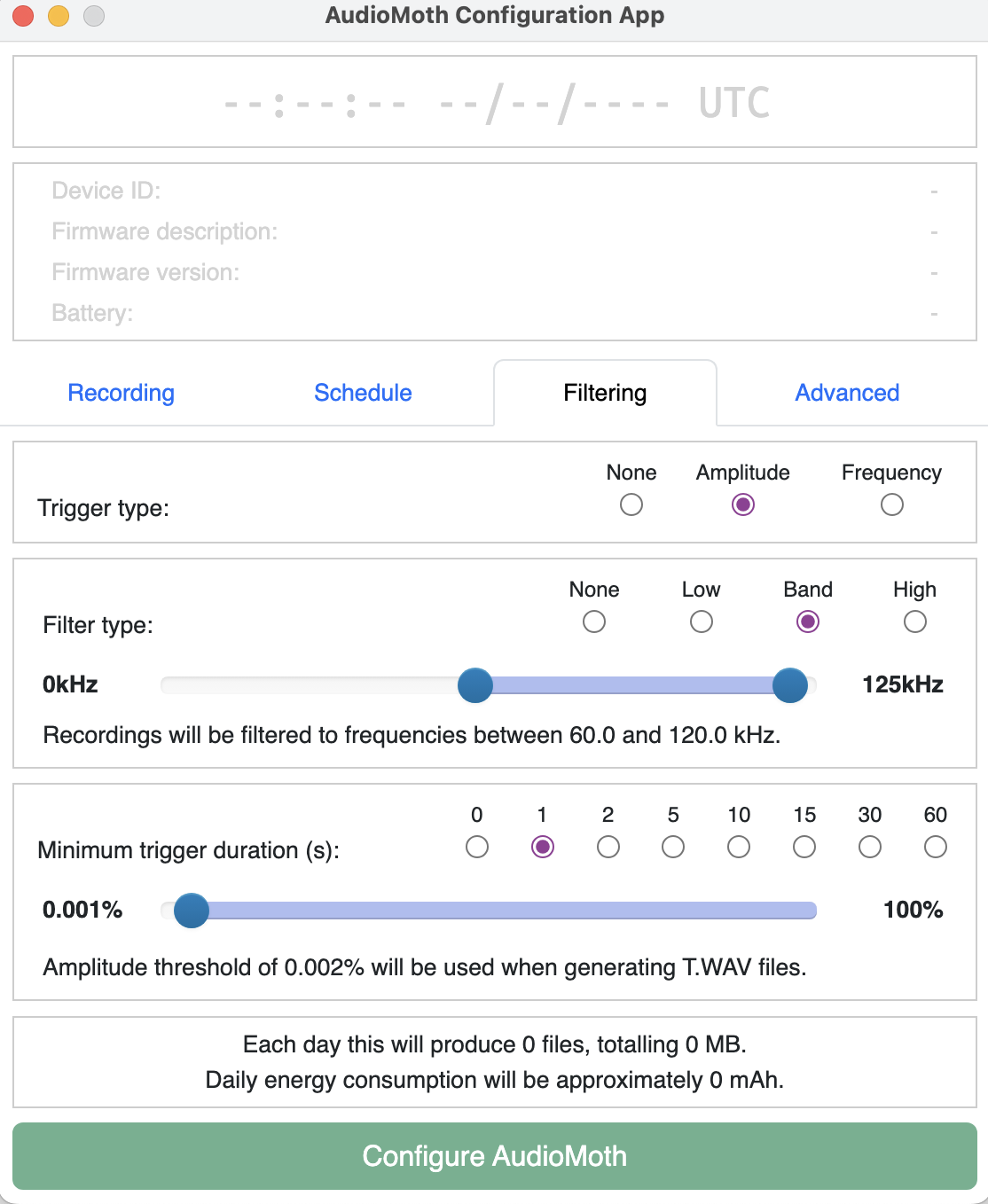Hi everyone. I'm new to ecoacoustics and have bought some AudioMoths for monitoring wildlife on the nature reserve I work on. Could anyone recommend some settings for monitoring UK bird and bat species? I did a test run using what I thought might be suitable for bats over one night but when I came to download the files there was over 20gb of data! Is this normal or can I streamline the settings a bit?
Thanks!
8 August 2024 11:00pm
Hi Nick,
I would highly recommend this awesome report: Good practice guidelines for long-term ecoacoustic monitoring in the UK - it goes through a ton of detail about different configurations.
From my own personal experience, if you're wanting to do birds and bats, projects I (and the org I work for, WildMon), usually use 2 separate devices for each.
- For regular frequency range animals (birds/frogs/etc.) - recorders run 1 minute every 5 minutes at 48kHz sample rate all day, which we've found is a decent trade-off between getting comprehensive sampling and saving on battery life & card space. That should get you ~3-4 weeks of runtime.
- We also go by a general rule of putting recorders at least ~400m apart (so assuming each has a detection radius of 200m) in forested areas, stretching it a bit more in more open areas. It's a decent trade-off between not getting pseudo-replicates (same calls across different recorders) and also not missing too much in between while maintaining decent spatial scale. Of course, the distance apart will depend on the area you're trying to cover and logistical constraints like the number of devices you have.
- For ultrasonic (bats), we usually recommend using an bandpassed amplitude threshold filter (see screenshot below) - this means that the recorder will only start actually recording when it detects a sound within the given frequency range that is above a certain amplitude level (since bats are really the only sounds up in those frequency ranges). You can set the frequency range depending on which species you're expecting to detect. You can also set a sampling schedule for this to only run dusk to dawn and turn off during the day, which counteracts the high battery usage and card spaces that such a high sample rate requires. The really high sample rates do unfortunately take up quite a bit of card space.
- For bats, the detection radius is obviously much smaller since those ultrasonic calls degrade so quickly; you'll really just be getting them when they're flying over. If you have an idea about roosting behavior (tree-roosting, cave-roosting, etc.) that can help optimize placement to try to get them as they're leaving or returning.
Checking the 'enable energy saver mode' under the Advanced tab will also save you battery life and usually I always check it.
Hope that all helps!
Carly

9 August 2024 12:36pm
Hi Nick,
Agree with all of Carly's suggestions and the guide provided. You can expect 20GB of data within a relatively short survey period if you don't use triggers. However, I've found the audiomoth triggers can miss detections, especially for some UK bat species which can be quiet/have low frequency signals.
There's some interesting reading in the acoustic survey methods guidelines. There's plenty of international research to get some further background on. You can also read a summary report of some Scottish woodland monitoring we conducted a couple of years ago - link at the bottom of this web page.
Best of luck!
Stefan
12 August 2024 6:46pm
also pinging @Giu.Appel who may have additional insights for bat sampling :)









Carly Batist